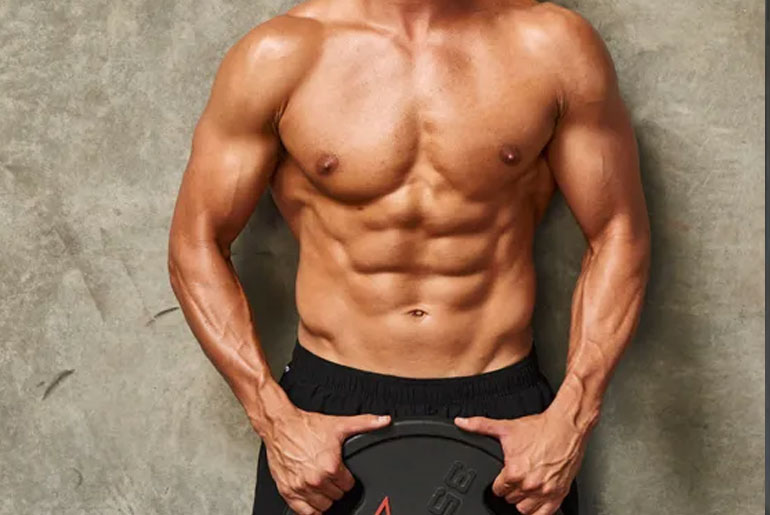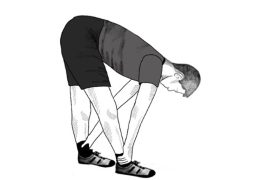Strength workouts, when performed with focus and intent, naturally engage the core, forming a crucial foundation for balance and power. Whether lifting a barbell, swinging a kettlebell, or executing bodyweight movements, a strong, braced core enhances stability throughout each phase of the exercise. Proper form and attentiveness to how the core supports the body during lifts are essential, transforming every repetition into an opportunity for developing defined abs.
The strength workouts outlined in the article are specifically designed to challenge the core through dynamic movements, varied loading techniques, and rotational elements. Exercises like front squats and rotational rows activate deep core muscles, contributing to a sculpted midsection. Additionally, movements such as kettlebell swings and side planks test the core’s ability to stabilize and control force, which not only builds muscle endurance and definition but also enhances overall performance.
With years of coaching experience and personal training insights, the author emphasizes the significant benefits of core-strengthening exercises on overall physical performance. The strength workouts provided aim to help carve out defined abs while improving strength in lifts, enhancing stabilization during high-intensity activities, and promoting better posture in daily life. Each workout is crafted from a blend of research and real-world experience, ensuring participants are well-equipped for success in their fitness journeys.
Sculpting six-pack abs requires a dedicated approach combining strength training, targeted core workouts, and a well-balanced diet. Below is an in-depth summary of the top five strength workouts designed to engage and define your abdominal muscles while promoting overall core stability and strength.
1. Weighted Crunches
- Overview: Weighted crunches intensify traditional crunches by adding resistance, effectively targeting the rectus abdominis (the muscle responsible for the “six-pack” appearance). This exercise helps in building strength and endurance in the abdominal region.
- Sets and Reps: 3 sets of 15-20 reps.
- Execution:
- Starting Position: Lie flat on your back on an exercise mat with your knees bent at a 90-degree angle and feet flat on the floor.
- Weight Placement: Hold a weight plate or dumbbell across your chest, ensuring a firm grip.
- Movement: Engage your core by pulling your belly button towards your spine. Lift your upper body off the ground, contracting your abdominal muscles as you raise your shoulders towards your knees. Aim to keep your lower back pressed against the mat.
- Return: Slowly lower back down to the starting position with control, ensuring you don’t just let gravity do the work.
- Tips: Focus on slow, controlled movements to maximize muscle engagement. Avoid pulling on your neck; instead, lead the movement with your chest.
2. Plank Variations
- Overview: Plank variations are excellent for building core stability and strength. They engage multiple muscle groups, including the abs, back, shoulders, and legs, making them highly effective for overall strength development.
- Sets and Duration: 3 sets of 30-60 seconds for each variation.
- Execution:
- High Plank: Start in a push-up position with hands directly beneath shoulders and feet together. Maintain a straight line from head to heels, engaging your core and glutes.
- Side Plank: Transition to a side plank by rotating your body, balancing on one forearm and the side of your foot. Keep your body in a straight line and hold for the specified duration, then switch sides.
- Plank Jacks: From a high plank, jump your feet out wide and back together while maintaining plank form, engaging your core throughout.
- Plank Shoulder Taps: In a high plank, lift one hand to tap the opposite shoulder while stabilizing your hips to minimize movement. Alternate sides for the duration.
- Tips: Keep your body rigid and avoid sagging your hips. Engage your entire core and breathe steadily throughout the exercise.
3. Kettlebell Russian Twists
- Overview: Russian twists focus on rotational movement, targeting the obliques (side abdominal muscles) and improving core stability and coordination.
- Sets and Reps: 3 sets of 15-20 reps per side.
Execution:
- Starting Position: Sit on the ground with your knees bent and feet lifted off the floor, balancing on your sit bones.
- Kettlebell Hold: Hold a kettlebell with both hands, extending your arms in front of your chest.
- Twisting Motion: Rotate your torso to the right, bringing the kettlebell beside your hip. Keep your core engaged and back straight.
- Return: Twist back to the center and then to the left side, completing the specified number of reps.
- Tips: Maintain control throughout the movement and avoid using momentum. If you’re unable to lift your feet, keep them on the ground until you build more strength.
4. Barbell Deadlifts
- Overview: Deadlifts are a compound movement that targets the entire posterior chain, including the back, glutes, and hamstrings, while also engaging the core. This exercise builds overall strength, supporting muscle growth and fat loss.
- Sets and Reps: 4 sets of 8-10 reps.
- Execution:
- Starting Position: Stand with your feet hip-width apart, with a barbell on the floor in front of you. Your shins should be close to the bar.
- Grip the Bar: Bend at your hips and knees to grasp the barbell with both hands, slightly wider than shoulder-width apart.
- Lifting Motion: Engage your core, push through your heels, and lift the barbell by extending your hips and knees simultaneously. Keep the barbell close to your body as you rise.
- Lowering the Bar: After reaching a standing position, lower the barbell back to the ground in a controlled manner, hinging at your hips and maintaining a straight back.
- Tips: Focus on maintaining a neutral spine throughout the lift. Avoid rounding your back and ensure your knees track in line with your toes.
5. Hanging Leg Raises
- Overview: Hanging leg raises are a powerful exercise for targeting the lower abdominal muscles. They promote core strength and stability while also engaging the hip flexors.
- Sets and Reps: 3 sets of 10-15 reps.
- Execution:
- Starting Position: Hang from a pull-up bar with your arms fully extended and legs straight down.
- Leg Lift: Engage your core and raise your legs together until they are parallel to the ground, keeping your knees straight.
- Lowering Motion: Slowly lower your legs back down to the starting position, maintaining control throughout the movement.
- Tips: Focus on using your abdominal muscles to lift your legs rather than swinging. If hanging is challenging, you can perform lying leg raises on the floor as an alternative.
Additional Tips for Success:
- Consistency: Incorporate these workouts into your routine 2-3 times a week to see progress over time.
- Nutrition: A balanced diet is crucial for revealing your abs. Focus on high-protein foods, healthy fats, and complex carbohydrates while managing calorie intake to reduce body fat.
- Hydration: Drink plenty of water to stay hydrated, which is essential for optimal performance and recovery.
- Rest and Recovery: Allow your muscles to recover between workouts by getting enough sleep and incorporating rest days. This will help prevent injuries and promote muscle growth.
By consistently incorporating these five strength workouts into your fitness regimen, alongside proper nutrition and hydration, you will effectively target and sculpt your abdominal muscles, leading to the development of defined six-pack abs. Each exercise complements the others, creating a balanced routine that challenges your core while promoting overall strength and stability.
Disclaimer:
The information contained in this article is for educational and informational purposes only and is not intended as a health advice. We would ask you to consult a qualified professional or medical expert to gain additional knowledge before you choose to consume any product or perform any exercise.







